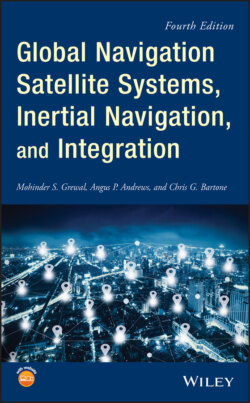Читать книгу Global Navigation Satellite Systems, Inertial Navigation, and Integration - Mohinder S. Grewal - Страница 97
3.3.4.2 Calibration Parameter Drift
ОглавлениеINS calibration parameters may not be exactly constant over time. Their values may change significantly over the operational life of the INS. Specifications for calibration stability generally divide these calibration parameter variations into two categories:
Turn‐on to turn‐on changes that occur between a system shut‐down and the next start‐up. They may be caused by temperature transients or power turn‐on effects during shut‐downs and turn‐ons, and may represent stress relief mechanisms within materials and between assembled parts. They are generally considered to be independent from turn‐on to turn‐on, so the model for the covariance of calibration errors for the th turn‐on would be of the form
where is the covariance of turn‐on‐to‐turn‐on parameter changes. The initial value at the end of calibration is usually determinable from error covariance analysis of the calibration process. Note that this is the covariance model for a random walk, the covariance of which grows without bound.
Long‐term drift, sometimes called “aging,” which has been attributed to such long‐term phenomena as material migration within solids or ion diffusion within crystalline materials. Its calibration parameter uncertainty covariance equation has the same form as Eq. (3.7), but with now representing the calibration parameter drift in the time interval between successive discrete times within an operational period.
